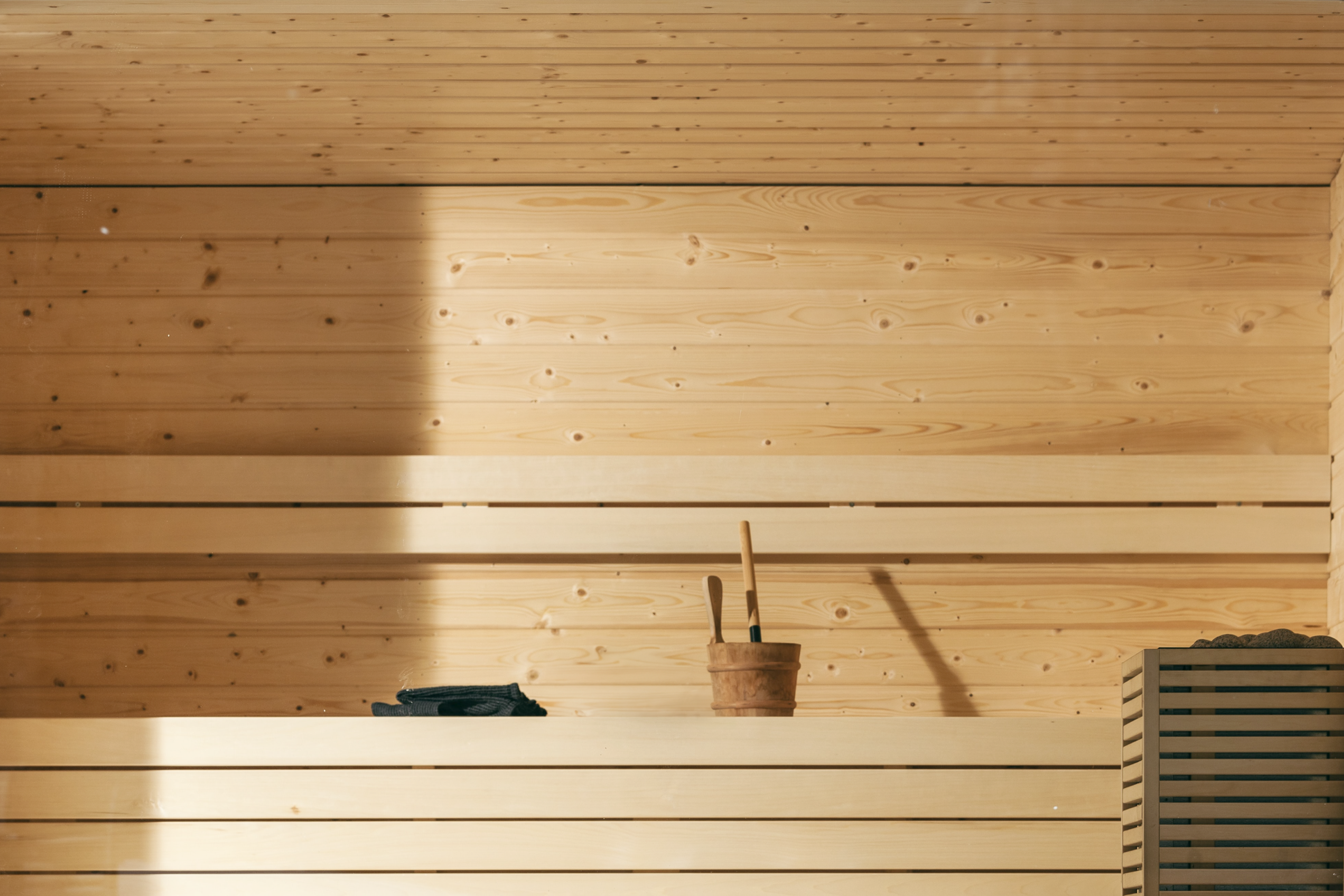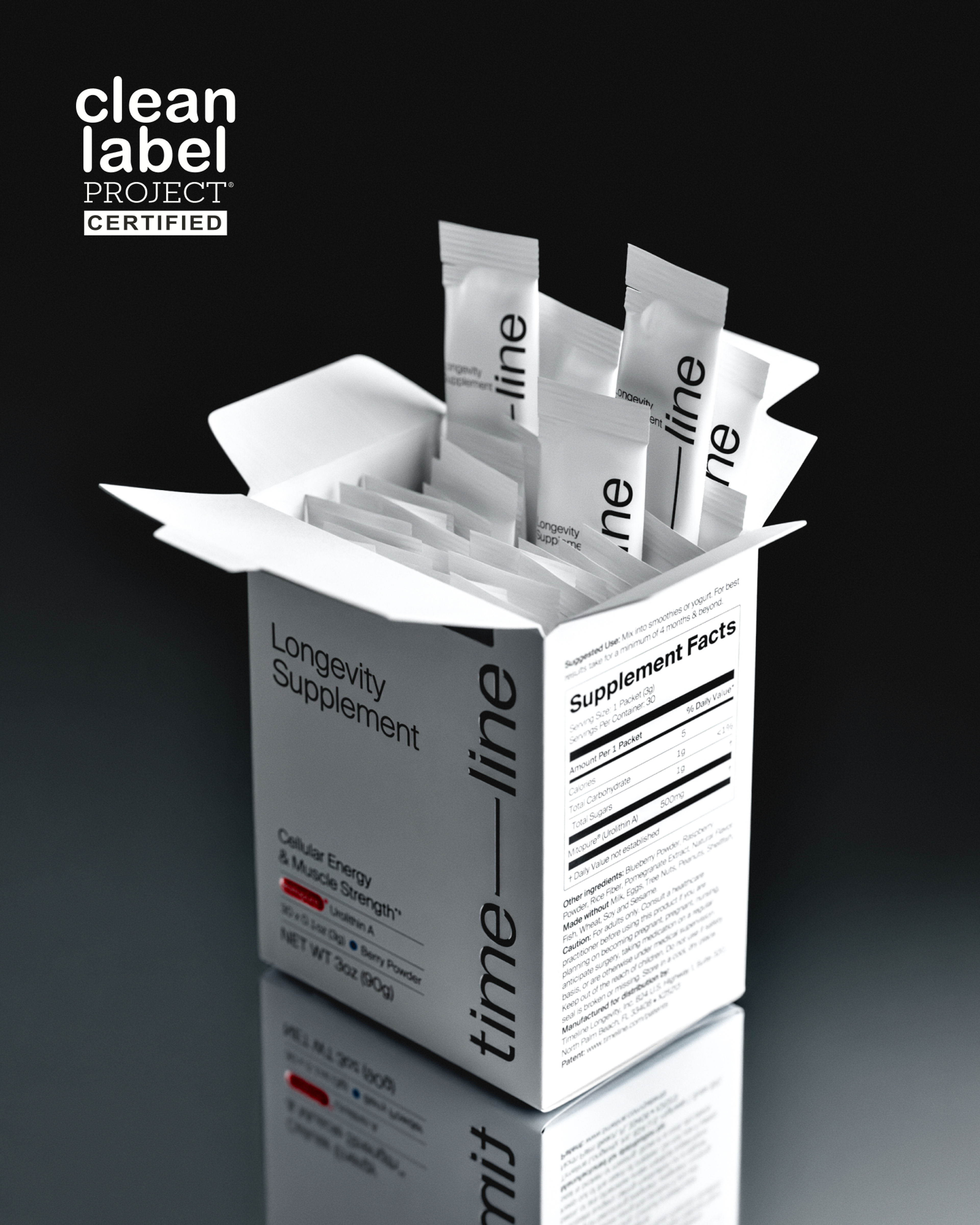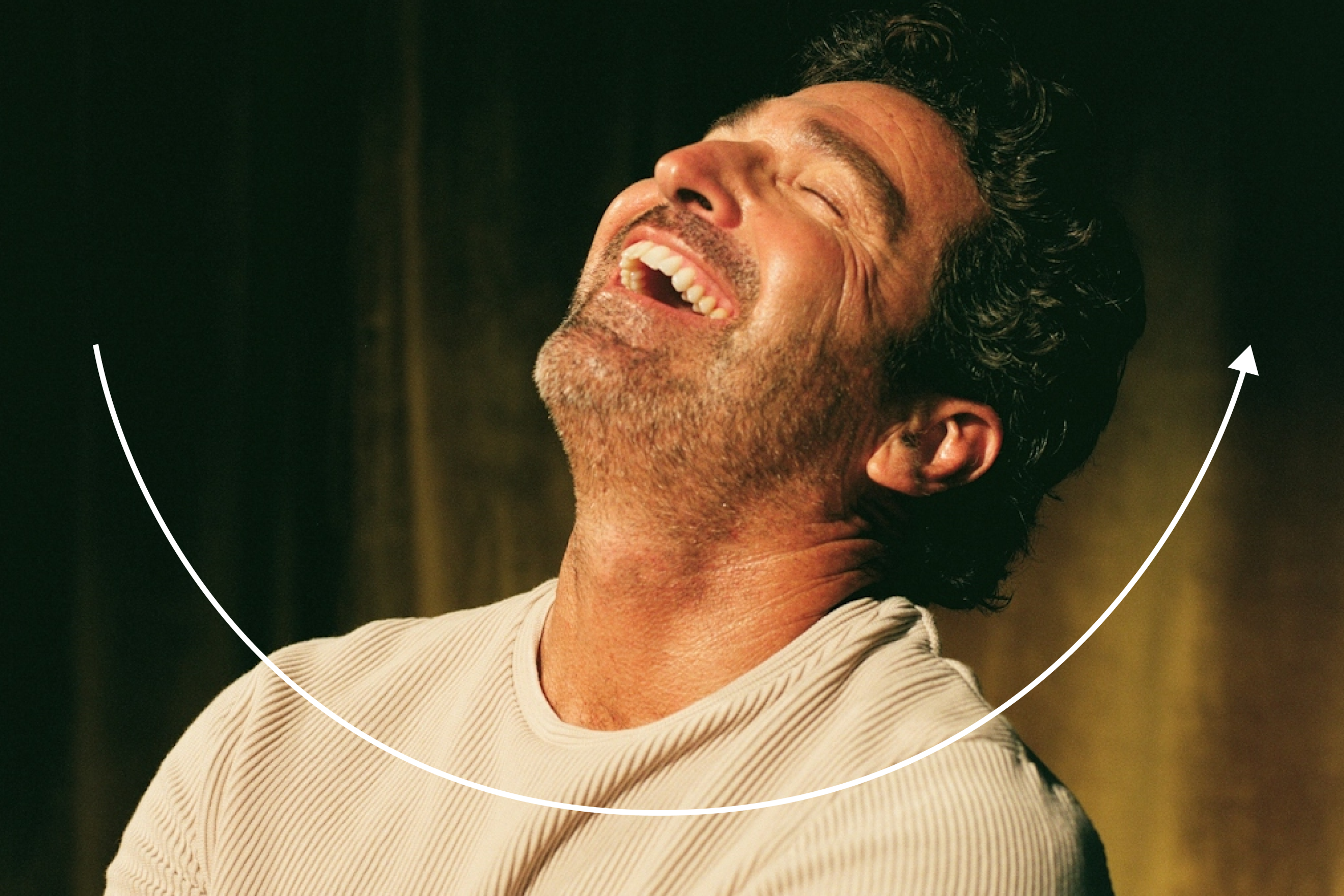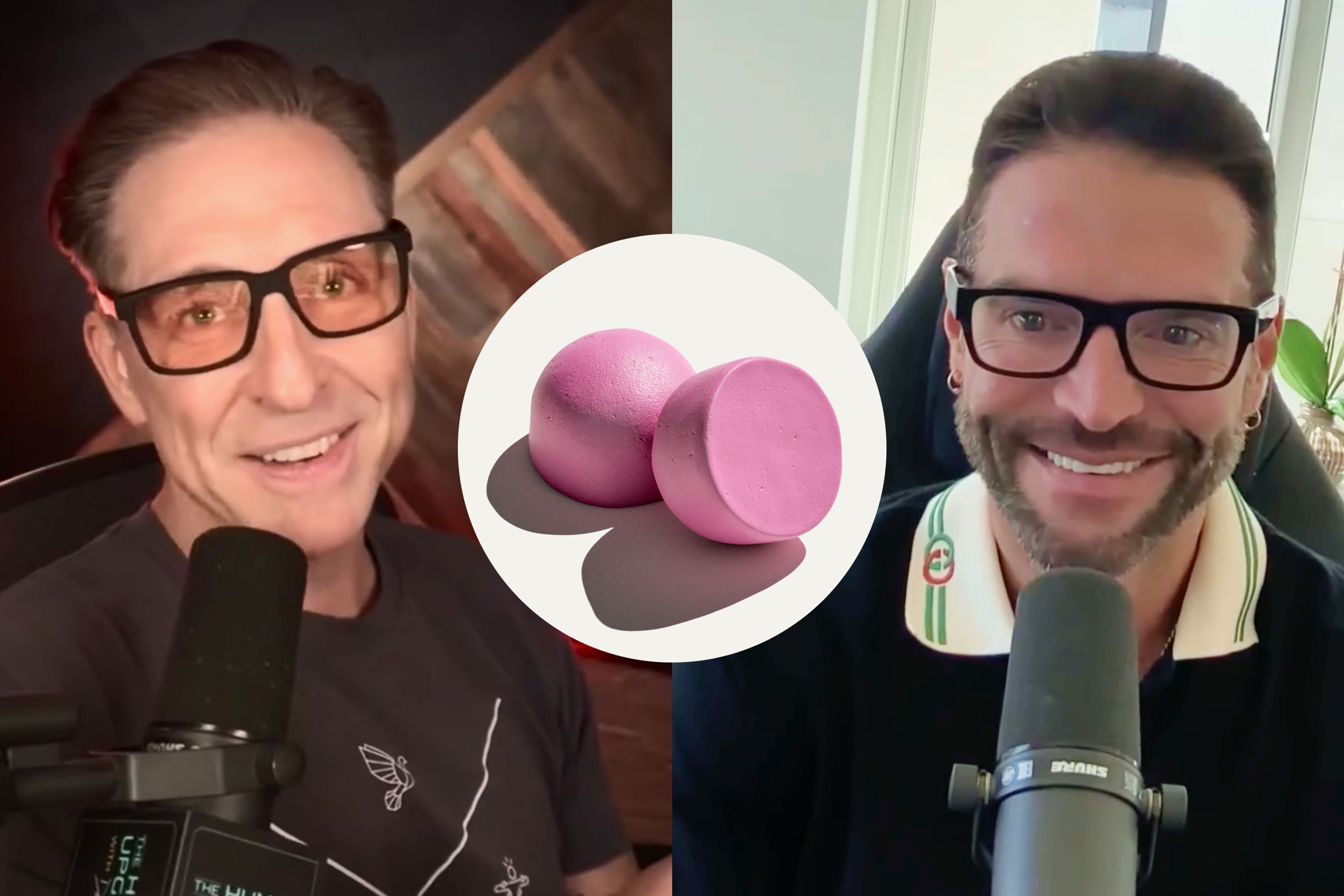Biohacking with heat: 6 benefits of sauna, proven by science
Sauna heat therapy can help muscle recovery, heart health, and longevity. Learn the benefits of biohacking with dry or infrared sauna.

What to know
Sweating in a dry or infrared sauna a few times each week can help reduce the risks of cardiovascular disease and death.
Dry saunas heat the air to 176-212° Fahrenheit (80-100° Celsius) using a wood stove or electric heater. The humidity in a dry sauna, unlike a steam room, is usually 10-20 percent.
Infrared saunas use non-visible light to heat users up. The heat is not as intense, but penetrates deeper into skin.
Sauna can help with muscle recovery after workouts, and may increase endurance.
Sitting in a sauna may help improve immune function, and can improve mitochondrial biogenesis.
The fountain of youth may actually be a dry, hot room: Heat therapy sessions in a sauna provide a mountain of health benefits, from speeding workout recovery to boosting mitochondrial growth to fending off premature death.
That might sound like a lot of hot air, but there’s science behind the benefits of sauna. Some boosts from sitting and sweating are still yet to be proven in studies, though. This article will help you separate sauna pseudoscience from the real deal.

Heat therapy: A powerful biohacking tool
Biohacking is an exciting, futuristic name for a time-tested idea: Testing different routines, remedies, habits, and strategies to see which improve your personal health. It’s do-it-yourself science[1], and the experiment is on one person: You.
Some biohacking enthusiasts go to the extreme, implanting devices inside their bodies[2]. But most stick to old fixes in new ways: Applying technology to improve sleep, testing new and different types of workouts, and adopting diet and fasting regimens aimed at optimizing health.
Heat therapy, including sauna, isn’t new: The people of Finland have been sweating in dry rooms for relaxation and health for thousands of years.[3] Now, biohackers are learning that this habit of heat exposure increases markers that point to increases in the growth of new nerve cells, improvements in muscle building, and even mitochondrial biogenesis (the increase of volume of mitochondria inside cells).
Heat therapy is sometimes done in water or a steam room. But “sauna” refers to one of two dry types of heat exposure.
Dry sauna
Traditional, Finnish-style saunas are wood-lined, high temperature rooms heated by a wood stove or an electric heater. These rooms are heated to 176-212° Fahrenheit (80-100° Celsius). As the name suggests, it’s a dry heat: The humidity in a dry sauna, unlike a steam room, is usually 10-20 percent. Occasionally, water is doused on the wood stove to create some steam and control heat.
While the air is dry, the people in a sauna are not: Spending time in a sauna causes profuse sweating, which is considered to be one of the sources of its benefits. Typical sauna sessions, or sauna baths, last 5 to 20 minutes, and are interspersed with cooling-off periods, either in a shower, pool, or a room temperature area.
Infrared sauna
Unlike dry saunas, infrared saunas heat just the people in the room, not the air. They use light to do so—specifically, infrared light that isn’t visible to the human eye. This is similar to the process used to warm premature infants in neonatal hospital units.[4]
These saunas heat the skin to a lower temperature: Instead of 80-100° Celsius, infrared saunas heat people to 40-60° Celsius (104-140° Fahrenheit). But this heat penetrates deeper than warmed air, going 3-4 cm into the fat tissue just below your skin, compared to just a few millimeters for hot air. This lets infrared sauna bathers work up a serious sweat at a lower temperature. Infrared saunas may also not raise the heart rate as high as dry saunas.
6 Health benefits of saunas
Turning up the heat can reduce disease risk, improve exercise performance results, and recovery, and hack the way your cells regenerate. It’s also been shown to impact not just physical health, but mental health. Here are 6 ways saunas can help hack your health.
Lowers risks of cardiovascular disease and death

In large studies of the Finnish population, where using a sauna is very common, those who sauna more often are less likely to die of cardiovascular disease: In one study of 1,688 adults, those who used a sauna 4-7 times per week were more than 50 percent less likely to die from a cardiovascular event than those who did so only once per week.[5]
These outcomes have been theorized to be related to multiple cardiac-related risk factors: Lower blood pressure, improvements in vascular dilation—the ability of blood vessels to expand and contract—and reduced arterial stiffness, among others.[6]

May increase mitochondrial biogenesis
Mitochondria are structures in our cells that generate the energy we need to live. These “powerhouses” of our bodies eventually wear down, though, and need to be replaced with new, better-functioning mitochondria. These two processes—mitophagy, which clears out the malfunctioning mitochondria, and mitochondrial biogenesis, which makes the new ones—are key to maintaining function as we age.
Heat may help: In a study of healthy young people, those who underwent two sessions of whole-body heat therapy—using water, not sauna—increased the expression of two types of chemicals that are indicative of mitochondrial biogenesis.[7]
May boost the number of immune cells in the body
In a study published in February 2023, young adult men who did 10 sessions of sauna over the course a few weeks—each consisting of three heat baths of 15 minutes each, separated by two minutes—saw an increase in leukocytes, types of cells that fight infection in the body.[8]

Fights chronic inflammation
Chronic inflammation, a condition where our bodies’ defense systems are constantly turned on, is a driver of aging and a risk factor for diseases including cancer, diabetes, and cardiovascular disease.
Saunas fight this chronic problem: Heat releases a pro-inflammatory molecule called IL-6, which seems bad—more inflammation, right? But this release drives the release of a potent anti-inflammatory substance called IL-10, which is associated with less inflammation in the long term. This is similar to how exercise works against chronic inflammation.[9]
Sauna sessions also reduce blood concentrations of C-reactive protein (CRP), an inflammatory agent that’s associated with chronic inflammation. In a study of 2,000 men in Finland, those who sat in the sauna more often had lower levels of CRP in their blood.

Helps speed muscle recovery
One way your muscles recover after workouts is from increased blood flow, and sauna sessions increase it: Heat therapy improves vasodilation, your blood vessels’ ability to expand and contract, delivering more blood where it’s needed. This may be one reason why a post-workout sauna helps with recovery.
Heat therapy also helps with soreness: In a study published in July 2023, basketball players who underwent 20 minutes of infrared sauna after a workout were less sore and better able to perform again 14 hours after the training session when compared to another group of players who just relaxed for 20 minutes after training.[10]

May improve workout results
Heat exposure increases the amount of growth hormone released in the body, as well as the expression of “heat shock” proteins, which are associated with muscle protein synthesis, a key process for muscle growth.
And in one small study of endurance athletes, three weeks of post-workout sauna sessions increased study participants’ time to exhaustion—the amount of time they could keep going in a workout—by a third.[11]
You’re hot, then you’re cold: Benefits of contrast therapy
Contrast therapy alternates hot and cold applications, usually to reduce swelling of an injury, or muscle soreness. The theory is that the alternating therapies increase blood flow to the treated area, leading to a removal of metabolic waste so that healing can occur[12]. Contrast therapy is usually done with water, either switching between hot water and an ice bath, or with wet towels.
Studies on contrast therapy with alternating temperatures of water produce mixed results: In a study of ankle sprains, contrast didn’t do any better than just applying heat[13], where other studies have found that contrast was effective for patients with knee osteoarthritis.[14]
In 2020, a study found that contrast therapy using infrared sauna with a cryotherapy device that concentrated nitrogen-cooled air on an injured area was more effective at increasing blood flow than contrast performed with different temperatures of water.[15]
Final words: How to start
Talk to your doctor before using a sauna, especially if you have a current cardiovascular condition. Sauna is generally considered safe, but some studies have found that participants have occasionally experienced low blood pressure and, in one small study, sperm health issues.[16] Sauna participants also occasionally—though rarely—get burned, and those burns can lead to rhabdomyolysis, a potentially fatal condition.[17]
If you do hop in the hot room, stay safe with these three tips:
- Start slow: Many of the studies on sauna include short sessions: five or 10 minutes of heat therapy at a time, broken up by periods of cooling off in a room-temperature area. Make like the study participants: Start with short periods in the sauna instead of trying to sit and sweat for extra-long periods.
- Take breaks: Don’t forget the cooling off periods! For every 10 or 15 minutes of sauna, take a break to breathe in a room temperature area.
- Drink water: Sauna makes you sweat—a lot. Make like the Finns: When you finish a session, drink water to replenish what you’ve lost.
Authors

Written by
Editorial Staff

Reviewed by
Director Science Communications
References
- ↑
Walls TA, Coria A, Forkus SR. Citizen Health Science: Foundations of a New Data Science Arena. Int J Popul Data Sci. 2019;4(1):1074. Published 2019 Sep 26. doi:10.23889/ijpds.v4i1.1074
- ↑
Yetisen AK. Biohacking. Trends Biotechnol. 2018;36(8):744-747. doi:10.1016/j.tibtech.2018.02.011
- ↑
Laukkanen JA, Laukkanen T, Kunutsor SK. Cardiovascular and Other Health Benefits of Sauna Bathing: A Review of the Evidence. Mayo Clin Proc. 2018;93(8):1111-1121. doi:10.1016/j.mayocp.2018.04.008
- ↑
Mero A, Tornberg J, Mäntykoski M, Puurtinen R. Effects of far-infrared sauna bathing on recovery from strength and endurance training sessions in men. Springerplus. 2015;4:321. Published 2015 Jul 7. doi:10.1186/s40064-015-1093-5
- ↑
Laukkanen T, Kunutsor SK, Khan H, Willeit P, Zaccardi F, Laukkanen JA. Sauna bathing is associated with reduced cardiovascular mortality and improves risk prediction in men and women: a prospective cohort study. BMC Med. 2018;16(1):219. Published 2018 Nov 29. doi:10.1186/s12916-018-1198-0
- ↑
Patrick RP, Johnson TL. Sauna use as a lifestyle practice to extend healthspan. Exp Gerontol. 2021;154:111509. doi:10.1016/j.exger.2021.111509
- ↑
Ihsan M, Deldicque L, Molphy J, Britto F, Cherif A, Racinais S. Skeletal Muscle Signaling Following Whole-Body and Localized Heat Exposure in Humans. Front Physiol. 2020;11:839. Published 2020 Jul 14. doi:10.3389/fphys.2020.00839
- ↑
Wanda Pilch, Marta Szarek, Czerwińska-Ledwig Olga, Piotrowska Anna, Małgorzata Żychowska, Sadowska-Krepa Ewa, Štefánia Andraščíková & Tomasz Pałka (2023) The effects of a single and a series of Finnish sauna sessions on the immune response and HSP-70 levels in trained and untrained men, International Journal of Hyperthermia, 40:1, DOI: 10.1080/02656736.2023.2179672 (https://doi.org/10.1080/02656736.2023.2179672)
- ↑
Hoekstra SP, Bishop NC, Leicht CA. Elevating body termperature to reduce low-grade inflammation: a welcome strategy for those unable to exercise?. Exerc Immunol Rev. 2020;26:42-55.
- ↑
Ahokas EK, Ihalainen JK, Hanstock HG, Savolainen E, Kyröläinen H. A post-exercise infrared sauna session improves recovery of neuromuscular performance and muscle soreness after resistance exercise training. Biol Sport. 2023;40(3):681-689. doi:10.5114/biolsport.2023.119289
- ↑
Scoon GS, Hopkins WG, Mayhew S, Cotter JD. Effect of post-exercise sauna bathing on the endurance performance of competitive male runners. J Sci Med Sport. 2007;10(4):259-262. doi:10.1016/j.jsams.2006.06.009
- ↑
Fokmare PS Jr, Phansopkar P. A Review on Osteoarthritis Knee Management via Contrast Bath Therapy and Physical Therapy. Cureus. 2022;14(7):e27381. Published 2022 Jul 27. doi:10.7759/cureus.27381
- ↑
Fokmare PS Jr, Phansopkar P. A Review on Osteoarthritis Knee Management via Contrast Bath Therapy and Physical Therapy. Cureus. 2022;14(7):e27381. Published 2022 Jul 27. doi:10.7759/cureus.27381
- ↑
Fokmare PS Jr, Phansopkar P. A Review on Osteoarthritis Knee Management via Contrast Bath Therapy and Physical Therapy. Cureus. 2022;14(7):e27381. Published 2022 Jul 27. doi:10.7759/cureus.27381
- ↑
Kim J, Jung H, Yim J. Effects of Contrast Therapy Using Infrared and Cryotherapy as Compared with Contrast Bath Therapy on Blood Flow, Muscle Tone, and Pain Threshold in Young Healthy Adults. Med Sci Monit. 2020;26:e922544. Published 2020 Aug 3. doi:10.12659/MSM.922544
- ↑
Hussain J, Cohen M. Clinical Effects of Regular Dry Sauna Bathing: A Systematic Review. Evid Based Complement Alternat Med. 2018;2018:1857413. Published 2018 Apr 24. doi:10.1155/2018/1857413
- ↑
Koski A, Koljonen V, Vuola J. Rhabdomyolysis caused by hot air sauna burn. Burns. 2005;31(6):776-779. doi:10.1016/j.burns.2005.04.024










